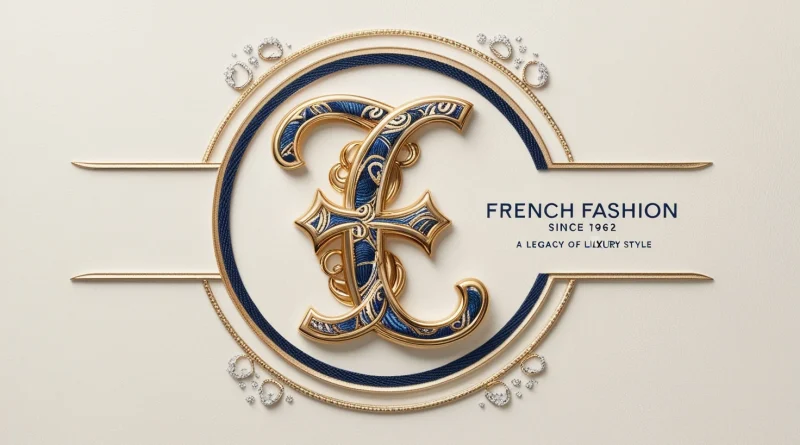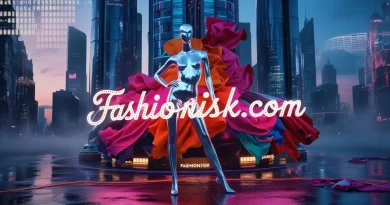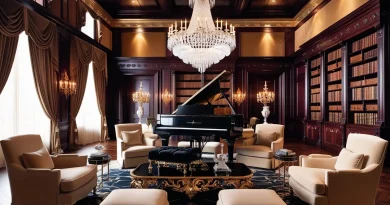French Fashion Monogram Since 1962: A Legacy of Luxury and Style
French luxury fashion has long been synonymous with elegance, sophistication, and timeless craftsmanship. At the heart of this legacy lies an iconic tradition: the monogram. Since 1962, French fashion monograms have transcended mere branding to become powerful symbols of exclusivity, heritage, and innovation. This article explores their rise, evolution, and contemporary relevance while celebrating the enduring craftsmanship and cultural significance behind these high-status symbols.
The Origins of French Fashion Monogram Since 1962
The year 1962 marked a pivotal era in French luxury fashion. It was during this period that monograms began evolving beyond logos to become emblems of identity and prestige. French fashion houses recognized the power of monograms as cultural icons, embedding their unique identities into patterns that would define an entire industry.
Brands like Louis Vuitton, Dior, and Chanel leaned on their heritage to establish monograms as symbols of refinement. Georges Vuitton’s creation of the Louis Vuitton monogram in the late 19th century found renewed relevance, and by the 1960s, the monogram became synonymous with French craftsmanship. This shift laid the groundwork for the monogram’s enduring role in luxury branding.
Louis Vuitton: The Original Monogram Pioneer
The Louis Vuitton monogram, a medley of initials, quatrefoils, and flowers, is one of the most recognizable symbols in fashion history. Conceived by Georges Vuitton, this motif became a status symbol by the 20th century and achieved global acclaim by the 1960s.
The brand’s signature monogram found new life in iconic pieces like the Speedy Bag and Keepall, embodying the ideals of functionality and elegance. Today, Louis Vuitton’s monogram continues to be a hallmark of luxury branding, effortlessly blending tradition with modernity through limited editions and collaborations with artists such as Takashi Murakami and Yayoi Kusama.
Chanel: The Timeless Interlocking Cs
No monogram captures timeless sophistication like Chanel’s interlocking Cs. Designed by Coco Chanel herself, this minimalist yet powerful logo debuted in 1925 but became a cultural icon during the post-war era. By the 1960s, it was firmly embedded in French luxury fashion as a symbol of empowerment and elegance.
From the legendary 2.55 handbag to contemporary reinterpretations in haute couture, the interlocking Cs epitomize Chanel’s commitment to refinement. As sustainability and customization gain traction, the house has reimagined its monogram in digital and circular fashion spaces, reinforcing its relevance for modern consumers.
Dior: The Dior Oblique Monogram
Introduced by Marc Bohan in 1967, the Dior Oblique canvas transformed monograms into high art. Featuring a repeat pattern of the “Dior” name, it showcased the brand’s innovation and adaptability during the rise of youth culture.
The Dior Oblique gained new life in the 21st century through collaborations and reinterpretations. It adorns everything from handbags and sneakers to streetwear-inspired pieces, proving its versatility and appeal across generations. The monogram has also embraced sustainability, with Dior emphasizing eco-friendly practices in its production processes.
Yves Saint Laurent: The YSL Monogram – A Bold and Modern Mark
The YSL monogram, created by Adolphe Mouron Cassandre in 1961, is a masterpiece of modern design. Its sleek interlocking letters reflect Yves Saint Laurent’s visionary approach to fashion, blending boldness with timeless allure.
Popularized on accessories such as the Loulou bag and sleek clutches, the YSL monogram epitomizes Parisian chic. Its versatility in high fashion and streetwear underscores its enduring relevance, while Saint Laurent’s emphasis on sustainability and ethical practices further solidifies its place in the modern fashion landscape.
Hermès: The Kelly and Birkin Bags – Monograms of Subtlety and Exclusivity
Unlike its contemporaries, Hermès has cultivated an understated approach to monograms. Instead of bold patterns, Hermès employs discreet embossing and subtle branding on its legendary Kelly and Birkin bags.
These iconic pieces represent the pinnacle of French craftsmanship, offering exclusivity without ostentation. Their appeal lies in the brand’s commitment to quality, ethical labor practices, and the preservation of heritage, making them enduring symbols of luxury.
The 1970s and Beyond: Monograms as a Statement
The 1970s ushered in a new era for monograms, driven by youth culture and bold self-expression. Oversized patterns, statement accessories, and the integration of monograms into everyday wear redefined their role in fashion.
French fashion houses responded by experimenting with artistic collaborations and bold reinterpretations. Monograms became cultural icons, symbolizing both prestige and individuality, while celebrity endorsements elevated their status in pop culture.
Monograms in the Digital Age
The digital era has revolutionized the fashion industry, and monograms are no exception. Virtual monograms now dominate digital fashion platforms, offering consumers customizable and sustainable options.
French brands like Louis Vuitton and Dior have embraced digital monogramming to connect with younger audiences, offering NFT collections and augmented reality experiences. This blend of tradition and technology ensures that monograms remain relevant in a fast-evolving world.
Sustainability in Monogram Fashion
As consumer values shift toward sustainability, French fashion houses are reimagining their monograms for the circular economy. From eco-friendly materials to upcycled vintage pieces, brands are adopting innovative practices to align with environmental goals.
Hermès and Chanel have spearheaded efforts to integrate ethical labor and sustainability into their production processes. Customization and personalization are also gaining popularity, allowing consumers to invest in timeless, high-quality pieces with lasting value.
The Cultural Impact of French Fashion Monograms
French monograms are more than just branding; they are cultural icons that signify luxury, heritage, and aspiration. Their presence in art, music, and cinema reflects their deep-rooted influence on global culture.
From Audrey Hepburn’s association with Givenchy to modern celebrities championing Louis Vuitton and Dior, monograms have cemented their status as high-fashion staples. They remain powerful tools for storytelling, connecting brands with their audiences on a deeply emotional level.
The Enduring Legacy
Since 1962, French fashion monograms have symbolized more than just luxury—they represent timeless artistry and the pursuit of excellence. Whether through innovation, sustainability, or cultural relevance, monograms have proven their ability to adapt and inspire.
As we look to the future, the legacy of French fashion monograms remains strong. By honoring their heritage while embracing modern values, these iconic designs will continue to shape the world of fashion for generations to come.
FAQs About French Fashion Monograms Since 1962
What makes French fashion monograms unique?
French fashion monograms combine heritage, craftsmanship, and innovation, making them timeless symbols of luxury and elegance.
Which brands are known for their iconic monograms?
Notable brands include Louis Vuitton, Chanel, Dior, Yves Saint Laurent, and Hermès. Each has its signature style and cultural impact.
Are monograms sustainable?
Many French fashion houses now embrace sustainability, using eco-friendly materials and adopting circular fashion practices.
How have monograms evolved in the digital age?
Digital monograms and customization options have brought new life to traditional designs, appealing to tech-savvy, younger audiences.
Why are monograms so popular?
Monograms symbolize exclusivity, identity, and prestige, making them highly sought-after by fashion enthusiasts worldwide.




